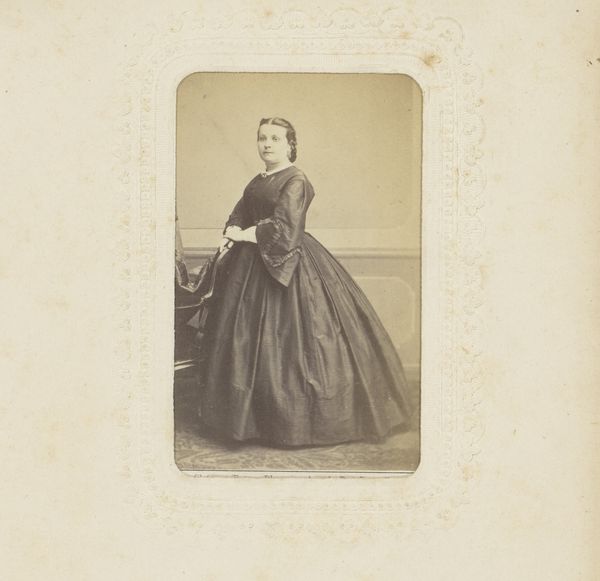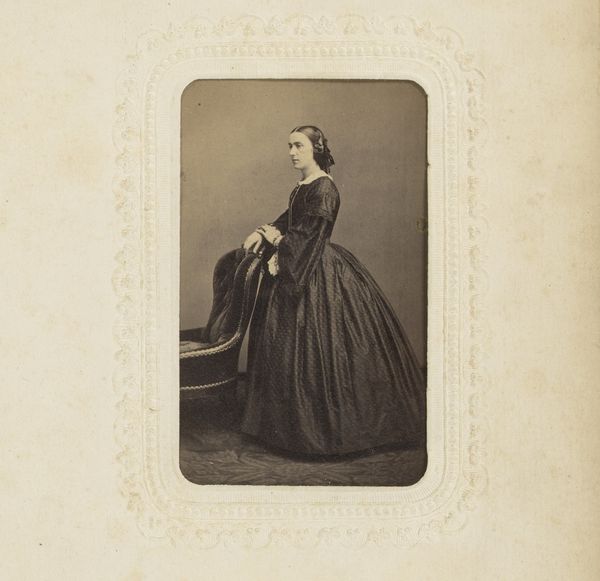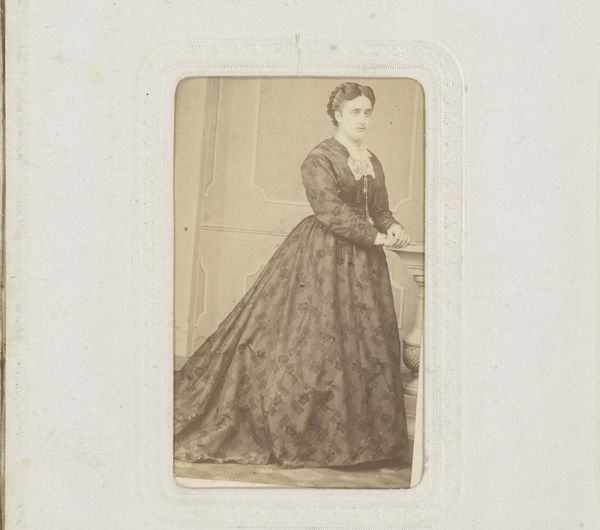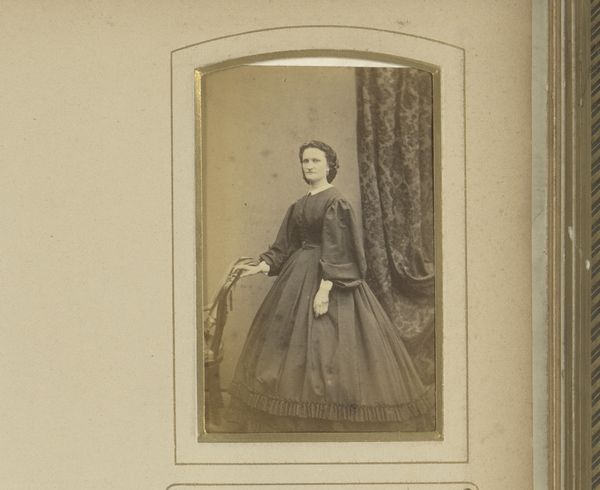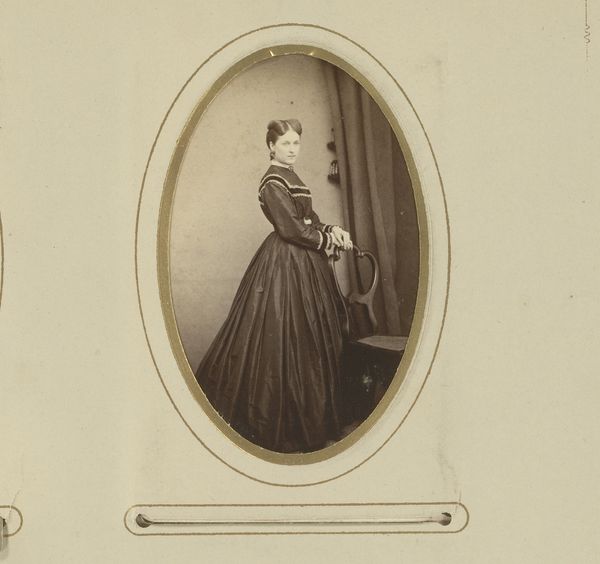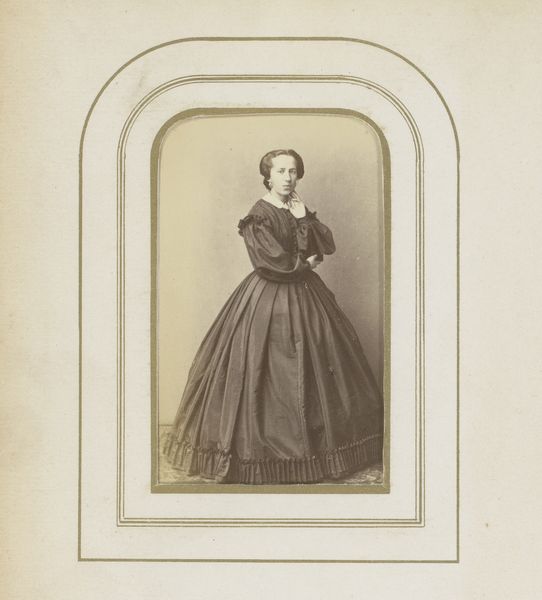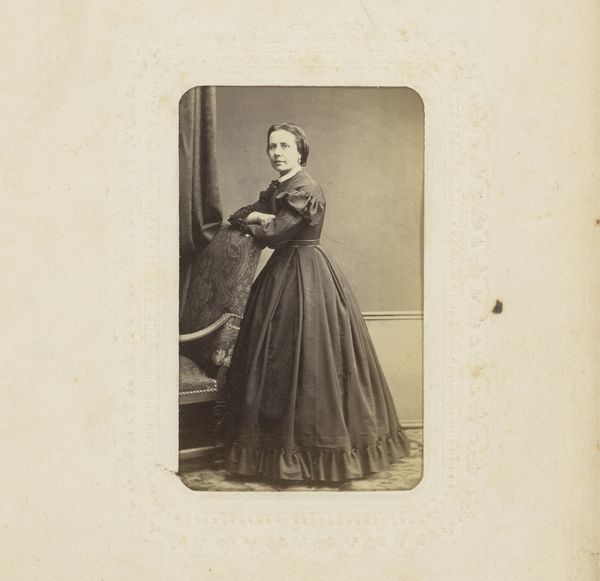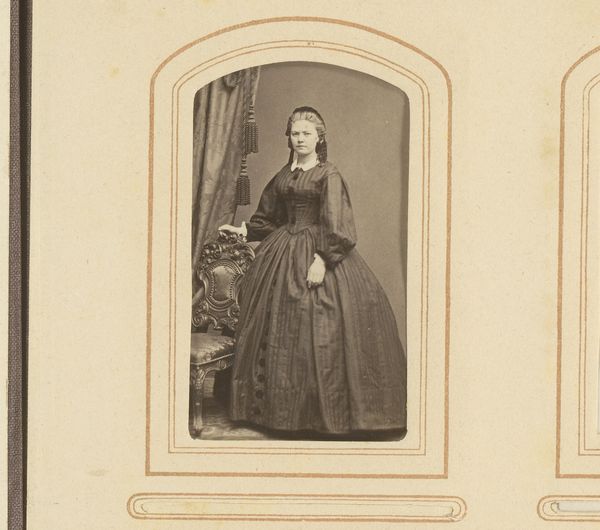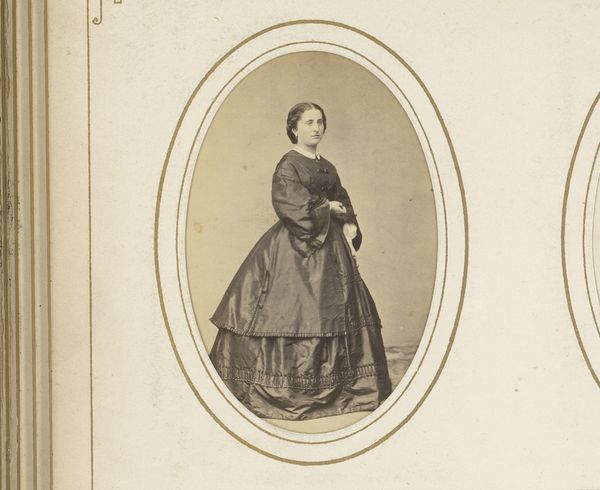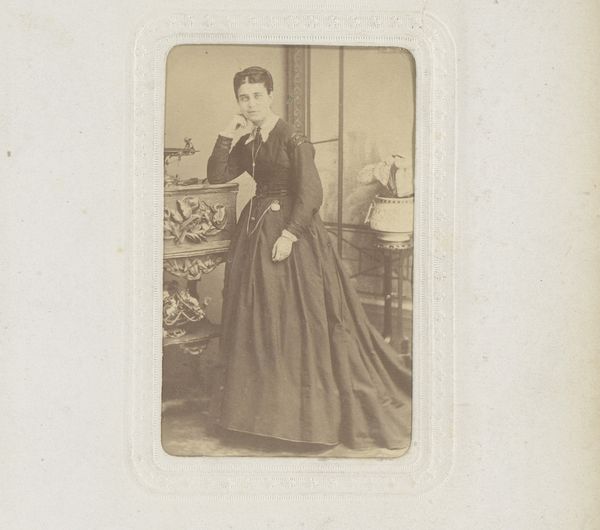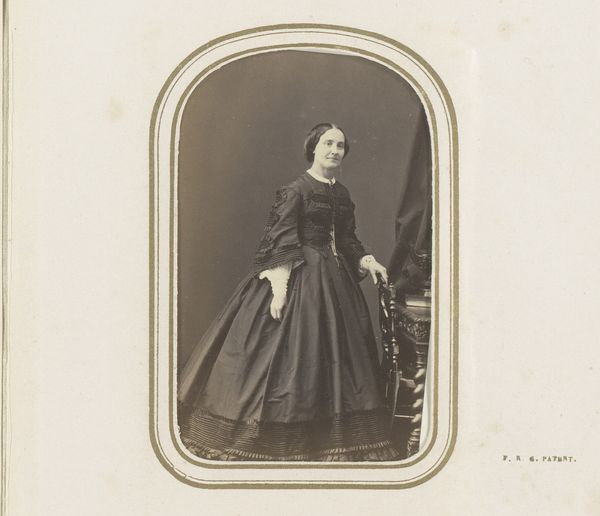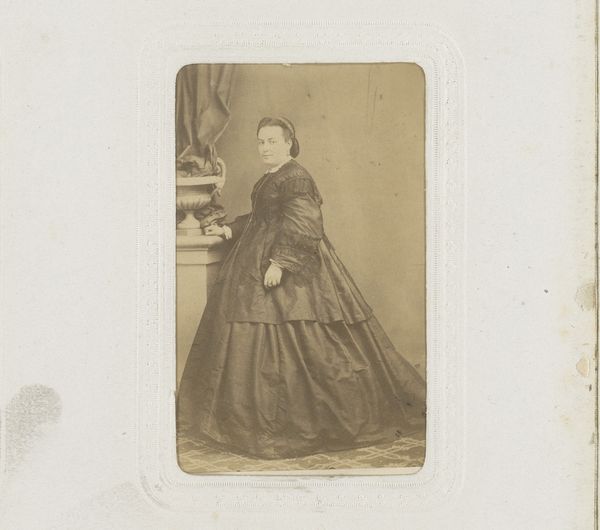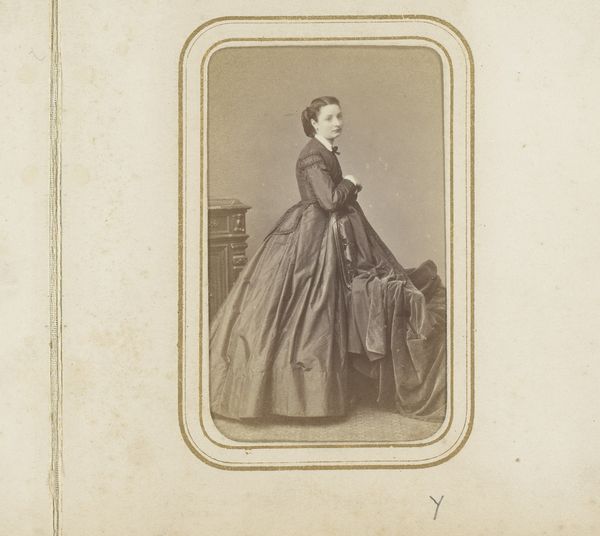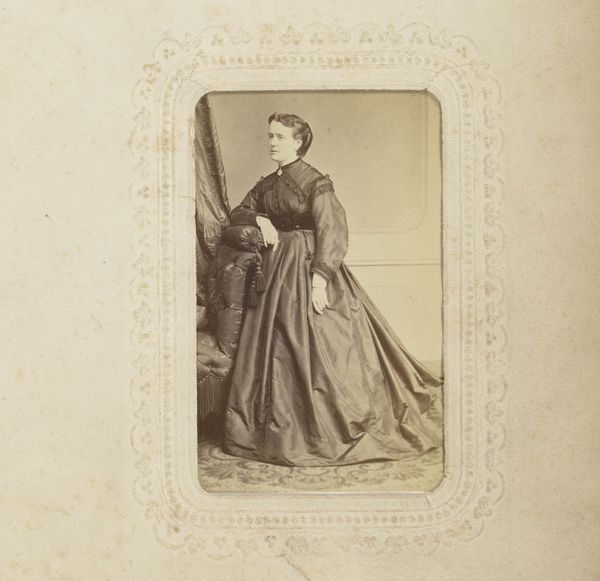
photography, gelatin-silver-print
#
portrait
#
photography
#
gelatin-silver-print
#
realism
Dimensions: height 100 mm, width 63 mm
Copyright: Rijks Museum: Open Domain
Editor: We're looking at a gelatin silver print titled "Portret van Hannah Grants", likely from 1863, by William Notman. It's quite a formal portrait, and the subject's dark dress contrasts starkly with the neoclassical backdrop. What do you see in this piece that stands out from a formalist point of view? Curator: Primarily, the geometric relationships established by the composition. Note the way the cascading lines of the dress play against the rigid verticality of the columns. Observe, too, how Notman manipulates light to model the form of Grants, highlighting the contours of her face and the textures of the fabric. Consider the interplay between these formal elements; what does their juxtaposition communicate? Editor: I see the contrast, definitely. The rigid lines of the background, the more organic lines of the chair and dress. Does the formal posing somehow detract from the person, subordinating it to structure? Curator: Perhaps. Or, consider how that subordination enhances the representation of societal structure through control of line and composition. Her form is not effaced but elevated within a precisely structured system. Notman asks us to evaluate not what Grants *is*, but the careful, geometric relationships and the resultant symbolic position *achieved* through her artful photographic encoding. What further observations do you make about the visual relationships within the photograph? Editor: I didn't see it that way, at first, but that is thought-provoking. I notice how the curve of the chair mirrors the curve of the dress, echoing a softness but within clearly defined shapes. This reframing opens up a whole new way to think about portraits, and, honestly, I find it helpful. Curator: It shows that formalism can reveal deeper meanings in what might initially appear as simply a "realistic" portrait. Considering form helps unlock intentional structures.
Comments
No comments
Be the first to comment and join the conversation on the ultimate creative platform.
